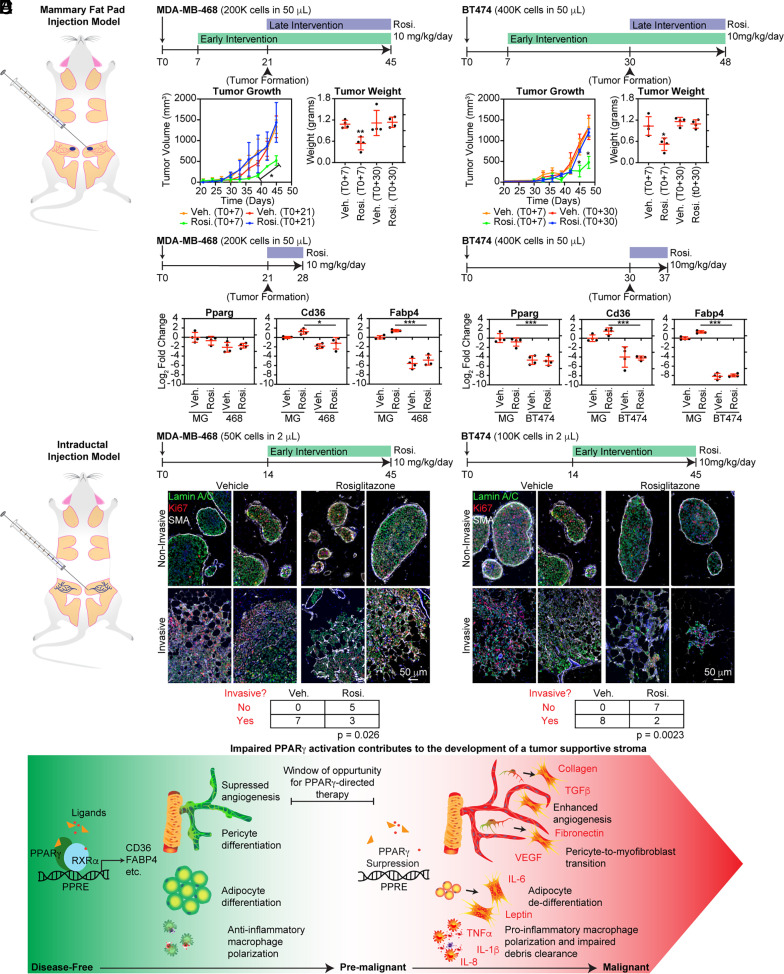Fig. 7.
The antitumor efficacy of the PPARγ agonist rosiglitazone required early intervention. (A) MDA-MB-468 or BT474 cells were xenotransplanted into the mammary fat pads of NSG mice. (B) Rosiglitazone (10 mg/kg/day) or vehicle treatment was initiated either 7 d post-xenotransplantation, before the formation of a palpable tumor (Early Intervention), or after the formation of a palpable lesion (Late Intervention). Tumor volume (measured every other day) and final tumor weights were determined. (C) After forming a palpable lesion, mice were treated with rosiglitazone or vehicle for 5 d. The tumors and contralateral mammary glands were analyzed by RT-qPCR for mouse Pparg, Cd36, and Fabp4 transcripts. (D) MDA-MB-468 or BT474 cells were injected intraductally through cleaved nipples. Starting at day 14, the mice were randomized and treated with rosiglitazone (10 mg/kg/day) or vehicle for 31 d. (E) mIHC for Ki67, human-specific Lamin A/C+, and SMA. The number of mammary glands containing invasive events was determined by examining sections taken approximately every 200 μm through the entire tissue and compared by Fisher’s exact test. (F) A diagram summarizing the effect of proper (Left) or impaired (Right) PPARγ activation based on evidence from this study and previous publications.

